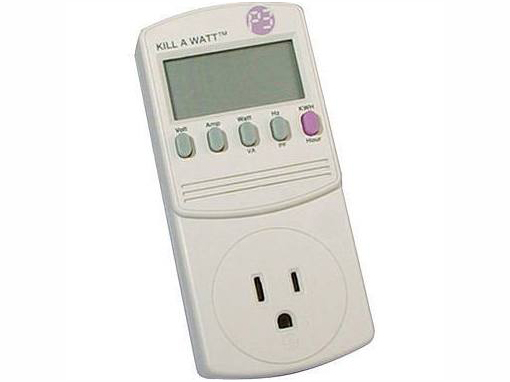Blog
Discovering Hidden Energy Drains

To trim your electricity bill, it helps to know how much energy your household appliances and electronics use. You can estimate that consumption – using online tools like Efficiency Vermont’s Electric Usage Chart or Central Maine Power’s Home Energy Calculator.
Better still, you can get customized information specific to your home by testing with a Kill-a-Watt monitor (available for loan through Maine’s public libraries). This electricity monitor calculates the kilowatt hours (kWh) that each appliance or electronic device draws so that you can accurately estimate its monthly or annual cost.
Using the monitor is easy: simply plug it into an electric outlet and then plug the appliance you’re testing into the monitor. You will need to leave that device plugged in for at least one hour to get an accurate “average” reading. Some appliances—like a refrigerator or dehumidifier—require a longer test period such as 24 hours. Make note of the time you began using the monitor so you know how many hours you tested.
Some electronics—like televisions, stereos and computers—draw power even when they are not in active use, a phenomenon known as “phantom” or “vampire” load. With these devices, you may want to test them when turned on and again when they’re switched off but still drawing some power. Collectively, electronics in “standby” mode cost the average household $100 a year, according to the U.S. Department of Energy.
For each appliance, the math equation is identical: take the number of kWh shown on the monitor and divide it by the number of hours tested. That total can be multiplied by the hours each day that appliance is plugged in and drawing power. Multiply that total times the days the appliance is used each month and you get that appliance’s monthly kWh.
The final figure that you need to calculate the appliance’s monthly or annual cost comes from your utility bill: the electricity rate that the utility charges. As of this writing, most households in Maine are charged between 15 and 18 cents per kWh.
For more information on calculating home appliance costs, review the Kill-a-Watt Monitor directions or visit the Department of Energy site. If you don’t have a local library from which to borrow an electricity monitor, contact the Maine State Library to learn how to borrow one by mail.
